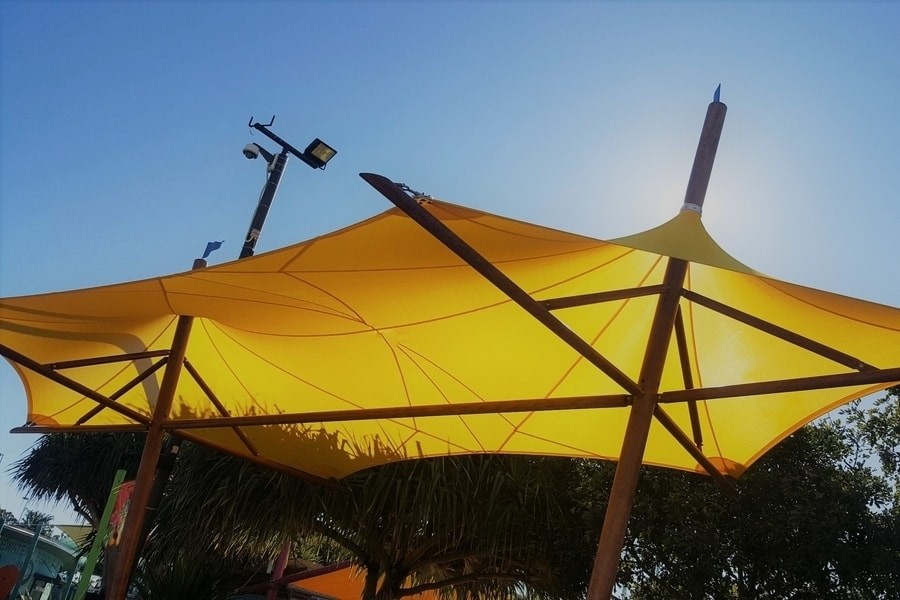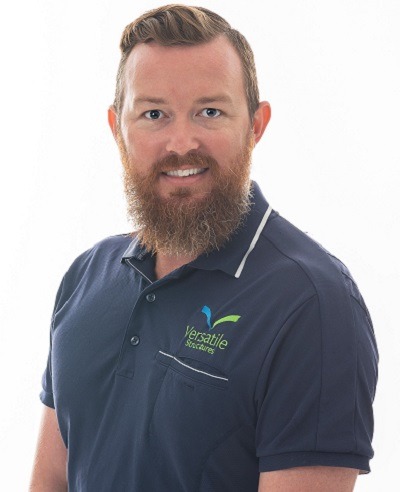YOU ARE HERE:

About ultraviolet radiation (UVR) and shade sails
Jamie Howard In Shade Sail, Car Park Shade Structure, Commercial Shade Structures
Research tells us that Australia is in the 5 top happiest countries on the planet. It offers carefree living, unrivalled natural beauty, a growing economy, and a diverse mix of cultures from all over the world.
But there is a catch though: besides it being home to some of the deadliest animals like the box jellyfish, taipan snakes, saltwater crocodiles and redback spiders, the Australian sun also seems to be out to get us. The Australian sun is much harsher and with higher UV radiation levels than other continents and known for having the highest skin cancer rates in the world. This is specifically true for areas like Brisbane, Sunshine Coast and Gold Coast as we experience fantastic weather all year round and tend to spend more time outdoors.
This article is not about educating you on sun protection but rather to highlight the importance of making smart decisions when choosing a shade sail, as not all shade sail fabrics are equal.
Shade sail function
Shade sails are a cost-effective way to increase a property’s footprint and its value. Besides the aesthetic, practical, and comfort providing qualities, a shade structure is of the best solutions for year-round protection against the harsh sun and its harmful ultraviolet radiation (UVR).
A shade sail’s design and exact positioning are vital as UVR rays vary in intensity, reaches us from various angles: directly from the sun, but also being reflected from the environment. Think about all the reflection from the snow when skiing.
Shade sail fabrics are tested for how much ultraviolet radiation the materials transmit. If the shade cloth is over stretched during installation the UVR protection is impeded and reduces the effectiveness of a shade structure
How much the shade fabric stretches depends on the type of shade cloth used, the support system as well as the installation itself. Owing to very little regulation in the shade structure industry you need to get an experienced installer to ensure the installation has the right amount of tension to ensure optimal UVR protection as well as ensure the best lifespan of the shade fabric.
Knitted shade cloths do stretch and are generally transmit more UVR, while woven shade cloths do not stretch much at all and are therefore transmits less UVR.
Sun position
Installing a shade structure isn’t just about selecting the correct shade fabric but also understanding the movement of the sun’s changes between Winter and Summer. The incorrect orientation of the shade fabric may result in a shade structure that provides inadequate protection in Summer and turn your shaded area into a frigid zone in Winter.
Sun protection classification
As much as we would like there to be a grading of sun protection for shade structures there are numerous variables that make it challenging, like the design of the shade structure, the distance from the person sitting or standing under a shade structure as well as the reflection and diffused radiation that varies on the substrate used on the floor. For instance, grass has lower radiation than a tiled floor.
Even though the authorities can’t agree the shade fabric itself can have up 99% UV blocking ability.
The Cancer Council recommends to
- Choose fabric that is dark, closely woven and heavy, as it blocks or absorbs more UV radiation.
- Conduct a shade audit of the site where shade is required
- Confirm with your local council whether you need a permit to put up the shade cloth.
- Check the credentials of the shade installer and quality of the shade cloth, such as
Does the company include a structural engineer’s report for the site and structure? What warranty applies? Do they provide ongoing services such as safety checks, maintenance, and cleaning? What are the specifications of the cloth used? Has it been independently tested to confirm the UV radiation protection level? What is the durability of the cloth?
Conclusion
The success of a shade fabric blocking ultraviolet radiation depends on the way it’s designed and installed. For these reasons, it is recommended you find a skilled and experienced designer and installer.
Feel free to download a copy of our shade smart guide for more information.
Share:
Jamie Howard - Director
Co-founder and Director Jamie has been hands-on in the shade and steel industry since leaving school. With over 15 years’ experience in shade, membrane and steel projects, Jamie is excited about the design opportunities shade structures offer in the commercial and industrial sectors. Jamie’s extensive design skills give him a competitive edge in situations with technical design complexity. He has won two personal industry awards for his designs, alongside many company-won awards.

